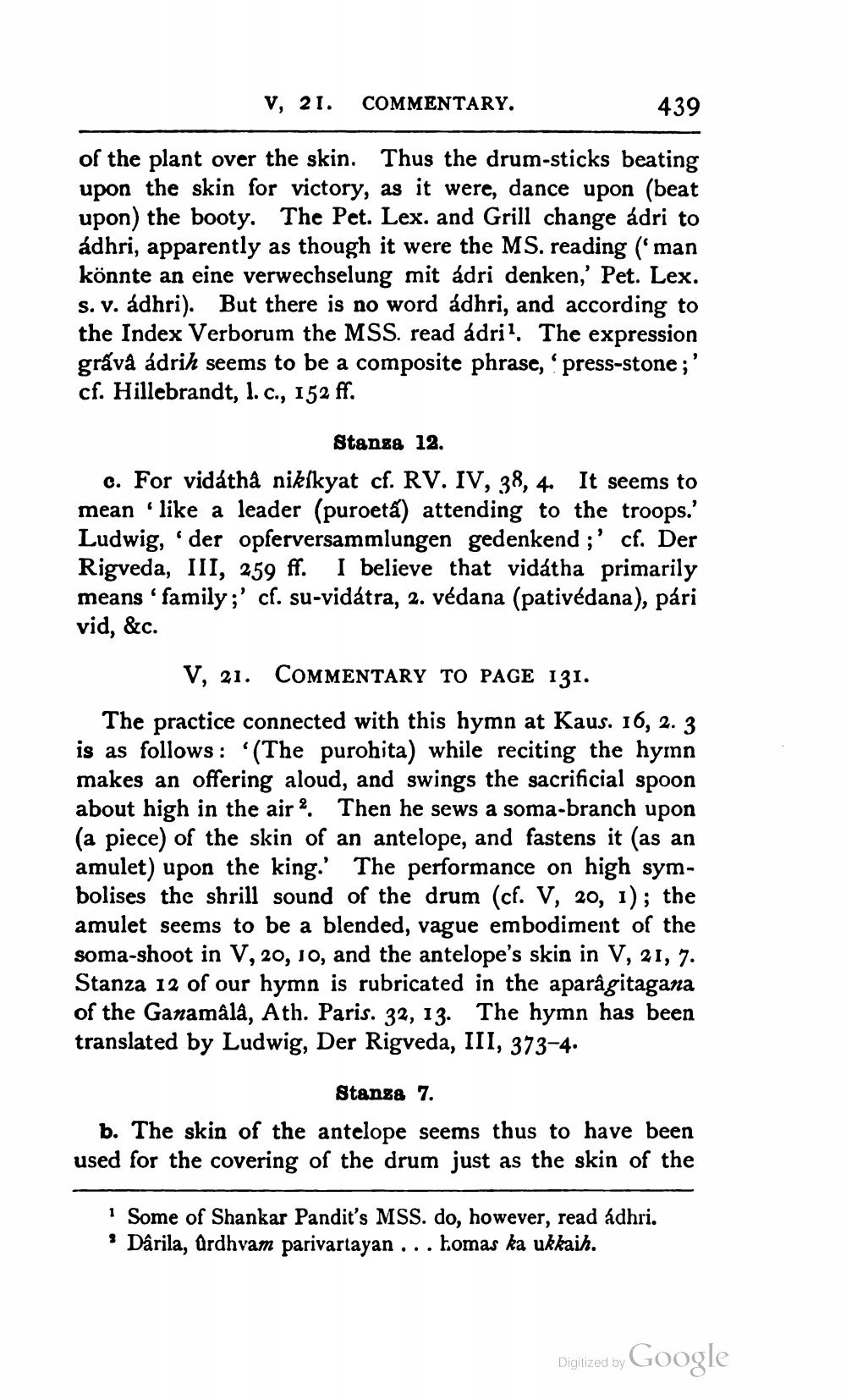________________
V, 21. COMMENTARY.
439
of the plant over the skin. Thus the drum-sticks beating upon the skin for victory, as it were, dance upon (beat upon) the booty. The Pet. Lex. and Grill change ádri to ádhri, apparently as though it were the MS. reading man könnte an eine verwechselung mit ádri denken,' Pet. Lex. S. v. ádhri). But there is no word ádhri, and according to the Index Verborum the MSS. read ádril. The expression grávà ádrih seems to be a composite phrase, press-stone;' cf. Hillebrandt, 1.c., 152 ff.
Stanza 12. c. For vidáthà nikskyat cf. RV. IV, 38, 4. It seems to mean like a leader (puroeta) attending to the troops.' Ludwig, der opferversammlungen gedenkend ;' cf. Der Rigveda, III, 259 ff. I believe that vidátha primarily means 'family;' cf. su-vidátra, 2. védana (pativédana), pári vid, &c.
V, 21. COMMENTARY TO PAGE 131. The practice connected with this hymn at Kaus. 16, 2. 3 is as follows: '(The purohita) while reciting the hymn makes an offering aloud, and swings the sacrificial spoon about high in the air . Then he sews a soma-branch upon (a piece) of the skin of an antelope, and fastens it (as an amulet) upon the king. The performance on high symbolises the shrill sound of the drum (cf. V, 20, 1); the amulet seems to be a blended, vague embodiment of the soma-shoot in V, 20, 10, and the antelope's skin in V, 21, 7. Stanza 12 of our hymn is rubricated in the aparågitagana of the Ganamâlâ, Ath. Paris. 32, 13. The hymn has been translated by Ludwig, Der Rigveda, III, 373-4.
Stanze 7.
b. The skin of the antelope seems thus to have been used for the covering of the drum just as the skin of the
Some of Shankar Pandit's MSS. do, however, read ádhri. : Dârila, ürdhvam parivartayan ... tomas ka ukkaih.
Digitized by Google




